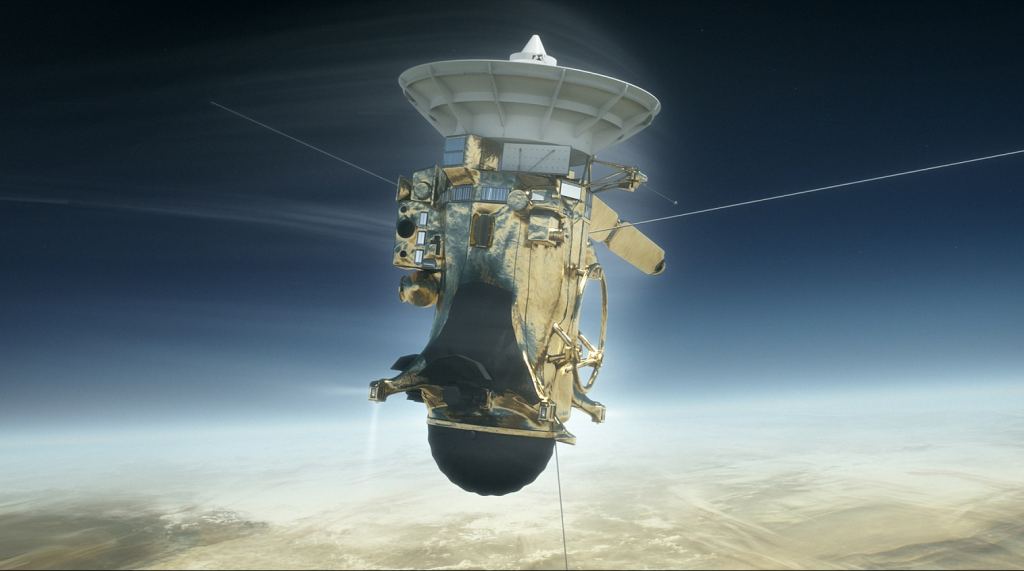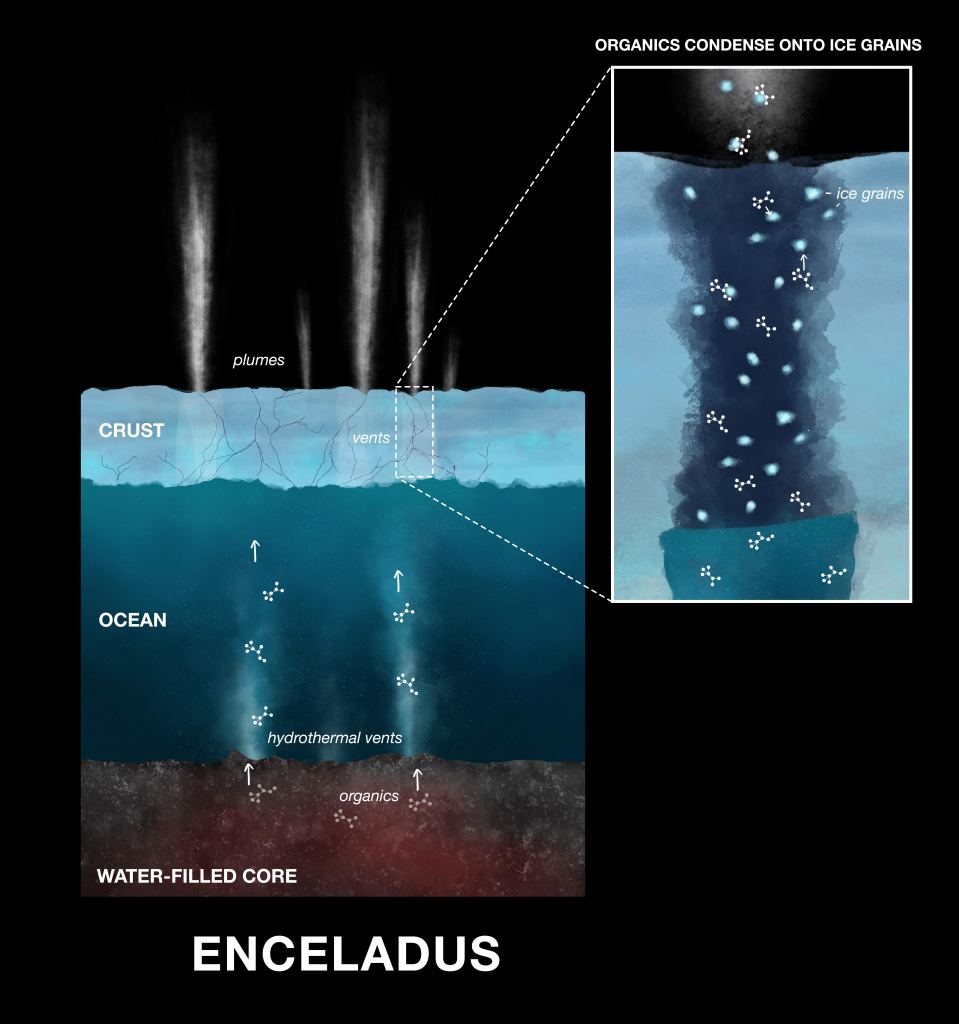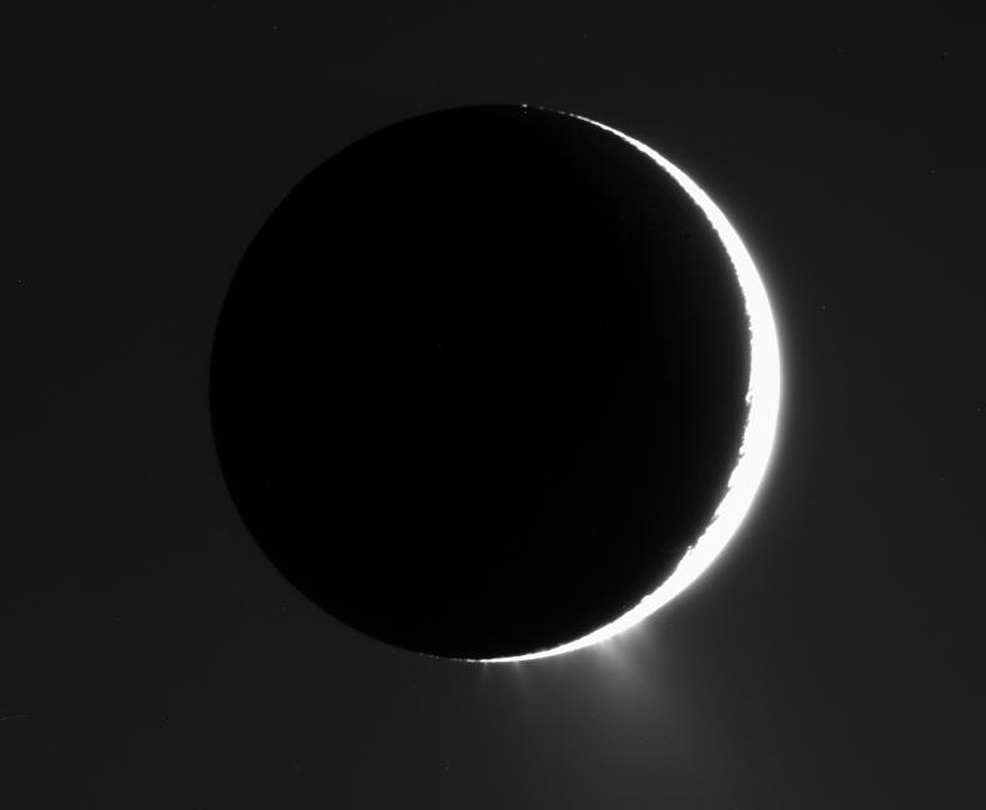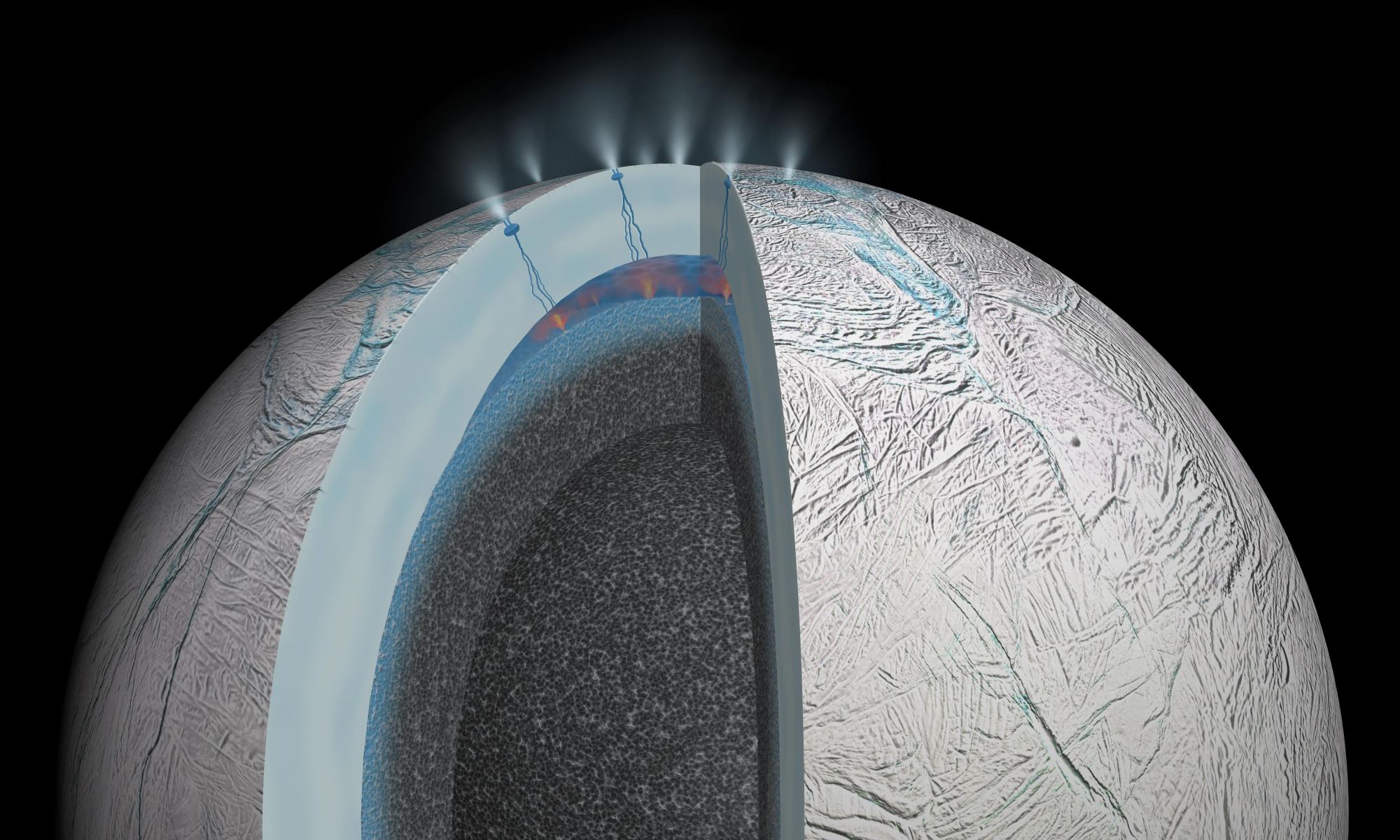The joint NASA/ESA Cassini-Huygens mission revealed some amazing things about Saturn and its system of moons. In the thirteen years that it spent studying the system – before it plunged into Saturn’s atmosphere on September 15th, 2017 – it delivered the most compelling evidence to date of extra-terrestrial life. And years later, scientists are still poring over the data it gathered.
For instance, a team of German scientists recently examined data gathered by the Cassini orbiter around Enceladus’ southern polar region, where plume activity regularly sends jets of icy particles into space. What they found was evidence of organic signatures that could be the building blocks for amino acids, the very thing that life is made of! This latest evidence shows that life really could exist beneath Enceladus’ icy crust.
The team’s findings appeared in a study that was published on Oct. 2nd in The Monthly Notices of the Royal Astronomical Society (and will be featured in the November issue). The team included multiple geologists from the Free University of Berlin and the University of Heidelberg, with the assistance of Sascha Kempf – the Principal Investigator with the University of Colorado’s Laboratory for Atmospheric and Space Sciences (LASS).

Since 2018, scientists have known that Enceladus’ powerful jets contain organic material, thanks to research conducted by many of the same team members. These jets are the result of hydrothermal vents located at the core-mantle boundary inside the moon. Releases from these vents mix with water from the moon’s interior ocean before being released into space as water vapor and ice grains.
Enceladus’ plumes can reach up to 500 km (310 mi) from the surface and are responsible for replenishing Saturn’s E-Ring. For the sake of their study, the team consulted the data gathered by Cassini‘s Ion and Neutral Mass Spectrometer (INMS) and Cosmic Dust Analyser (CDA). These instruments were responsible for the detection of organic molecules within ice grains contained in Enceladus’ plumes.
After conducting a broader compositional analysis of the spectra obtained by the CDA, they made a profound discovery. The newly discovered molecules, they learned, were determined to be nitrogen- and oxygen-bearing compounds. On Earth, similar compounds are part of the chemical reactions that produce amino acids, which are the building blocks of protein molecules.
What’s more, on Earth, hydrothermal vents are what provide the energy necessary to fuel these reactions. Combined with the fact that the oldest fossilized lifeforms have been found around hydrothermal vents on the ocean floor, scientists theorize that this is how and where life first emerged on planet Earth.

Scientists believe that on Enceladus, this same activity could power reactions that could lead to the building blocks of life. As Dr. Nozair Khawaja – a postdoctoral researcher with the Free University of Berlin and the University of Heidelberg and the lead author on the study – explained in a recent NASA press statement:
“If the conditions are right, these molecules coming from the deep ocean of Enceladus could be on the same reaction pathway as we see here on Earth. We don’t yet know if amino acids are needed for life beyond Earth, but finding the molecules that form amino acids is an important piece of the puzzle.”
According to their findings, the organic molecules would have first dissolved in Enceladus’ interior ocean and then evaporated from the water surface. After rising to reach the fractures in the moon’s crust, they would condense and freeze to form ice grains that would be blown into space with the rising plume. Once they became part of Saturn’s E-Ring, they were detectable by Cassini’s CDA instrument.
These latest findings confirm the team’s 2018 discovery that organic molecules periodically float to the surface from Enceladus’ interior. With this latest study, the team has taken things a step farther by showing how these molecules, dissolved in the ocean, could be linked to the formation of amino acids in the moon’s interior.

Above all else, this is further proof that Enceladus could support conditions conducive to habitability in its interior. Between the confirmed existence of liquid water, the chemical elements and the hydrothermal activity, all the ingredients for life are there. In the coming years, NASA and the ESA both plan to send a mission to Europa to look for evidence of life in its interior- like the Europa Clipper and the Jupiter Icy Moons Explorer (JUICE).
Because of the discoveries made by Cassini, multiple mission concepts that would explore Enceladus and Titan are currently being considered. Who knows? By the 2030s, humanity may have indisputable proof that life exists beyond Earth in not one, but two or more locations!

